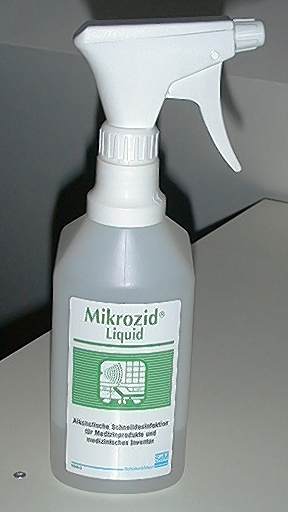- ! ! ! ! ! ! ! ! ! ! ! ! ! Latest Updates
- ! ! ! ! ! ! ! ! ! ! ! ! ! Latest Updates
- ! ! ! ! ! ! ! ! ! ! ! ! ! Latest Updates
- Home
- Boa constrictor subspecies
- Boa constrictor - Interesting Facts
- More boa information
- Boa Gallery
- Boas for Sale
- Contact
Without a doubt, the water container is one of the most important parts of the setup. It has three functions:
- Provides drinking water
- Provides opportunity to soak
- Regulates humidity
You can gather from the second function that the container should at least be large enough to allow for the snake to soak in it, without it feeling like a sardine in a can. Since boas love to “let go” in the water, the container should be removable for cleaning without much effort.
The water must be changed daily, even if it has not been soiled by the snake. Pathogenic agents like Pseudomonas aeroginosa thrive in a moist environment, and multiply readily in the climatic conditions within such an enclosure.
Keep in mind: Next to the potting soil, the water container is the most suitable breeding-ground for pathogenic agents in the enclosure.
These pathogenic organisms can attack the digestive organs as well as the respiratory tract of the snake. You therefore have to replace the water on a daily basis to avoid infections in your animal.
This is done as follows: First, you pour the stale water into the toilet, and rinse the container with fresh tap water. Next, you empty it out and clean it with a 25% vinegar solution. Using a brush like those used for dishes works best. Before you refill it with fresh water, the container must be rinsed again. As you can see, this procedure alone pretty much prohibits the use of a permanently installed water container.
The drinking and soaking water for the snake should always be in a condition that would allow for you to drink from the same water yourself.
The brush that you use for cleaning should be disinfected after every use. An empty pickle-jar containing a disinfectant suits this purpose well. It is important that the bristles of the brush are completely soaked, as this eliminates all pathogenic germs that the bristles harbor from cleaning the water container.
This is especially important if you have a large collection of snakes. By failing to do this, you risk the transmission of pathogenic agents from one enclosure to the next via brush.
After trying a number of disinfectants, we have settled on Microzid AF Liquid® . It is a highly effective disinfectant that can be purchased in large quantities at pharmacies. Those who find Mikrozidâ to be too expensive may want to use Performâ as an alternative. It is a powder that can be solved in water to make an equally effective disinfectant that, however, requires more time to be effective.
Boa constrictor water container | Boa constrictor drinking water | size of the water bowl in the boa terrarium | bathing a boa constrictor | boa constrictor is swimming | Terrarium humidity | how often should I change the water | how to clean the water bowl in the boa constrictor cage
We have found that the residue of disinfectants, that is harbored by the bristles of the brush combines with the vinegar solution (which is used for cleaning the water container) to a solution that seems to keep the bacteria from multiplying more effectively.
In several tests, we noticed that the water in a water container that had been cleaned that way was still looking pure and clear after 3 days, although it usually shows a thin film at the surface, a sign for a massive amount of bacteria, after barely 2 days.
However, we would like to state that the manufacturer of this product, Schülke & Mayr GmbH in Norderstedt, Germany, has neither tested the application of the product the way we practice it, nor does the company recommend this.
Since we are talking about disinfectants: If you have a sick snake in your collection, you would do well in sanitizing your hands after handling it before touching the next animal. For this purpose, the previously mentioned products are unsuitable, as they are designed for sanitizing spaces.
A product called Desderman Nâ, which was especially designed for hand sanitation and is also used in hospitals, is recommended here. Desderman Nâ is also available in pharmacies only.
But now back to the water container. After the cleaning, the container is to be thoroughly rinsed out, before refilling it with fresh water.
Afterwards, you may add either a little bit of vinegar solution, vitamin c powder, or citric acid powder to the water, in order for the water to reach a ph-value between 5 and 6. In this somewhat sour environment, bacteria multiply much less readily than it does at a neutral ph-value of 7. Finding the right dosage is not difficult; simply get a so-called indicator strip from a pharmacy.
These strips usually come in a whole roll, and should be able to measure ph-values from 1 to 10. After “souring” the water, simply tear a off a piece, and hold it into the water. The indicator strip will change its color immediately. Enclosed with the strips is a color scale, with which the result can then be interpreted (similar to some pregnancy tests), and the ph-value determined.
You will then know whether another half-a-spoon of citric acid needs to be added, or whether your snake would then be immediately dissolved and killed (just kidding).
The “soured” water with a ph-value between 5 and 6 bears no risk for your snake. As the aquarist people among the readers will be able to confirm, the water of the Amazon stream is also “sour” (so-called “black water”). If the redtail boas there, who certainly take a sip of Amazon water from time to time, tolerate this, then it will certainly not harm other boas as well.
And now to the last function of the water container in the enclosure - the regulation of the humidity:
As we have learned in school, the evaporation depends on the size of the water surface. You therefore have an excellent way to regulate the humidity within the cage. If it is too low, just place a larger water container (or even two) in the enclosure; if it is too high, use a smaller one.
The humidity within the cage depends also on the ambient temperature and humidity of the room in which the enclosure is located. The humidity will therefore be subject to strong variations, as the different seasons and weather conditions progress and change. This can be controlled very effectively by the flexible use of larger and smaller water containers.
To regulate the humidity this way is much better than misting, because it is milder on the inhabitants as well as the cage furniture. Why? Very simple: Misting eventually leads to water spots all over the setup, and the cage furniture starts to rot. Also, some of those cold showers have lead to health problems in some boas.
Finally, one last thing:
Use white hydro culture containers as water container. You can read in the section about snake mites why we recommend this.

